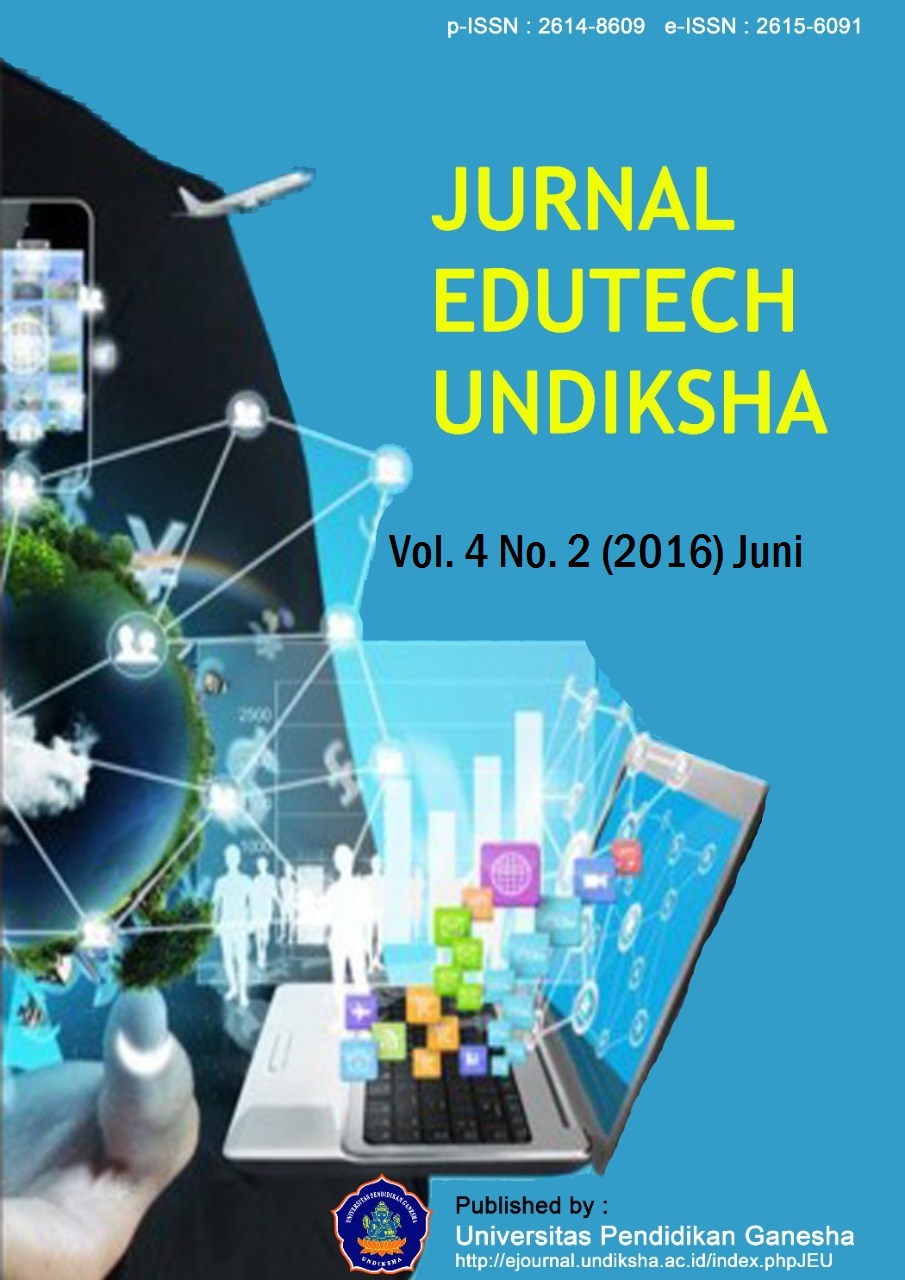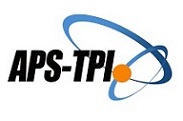PENGEMBANGAN MEDIA VIDEO PEMBELAJARAN TEKNIK DASAR BULUTANGKIS MATA PELAJARAN PENJASKES DENGAN MODEL HANNAFIN AND PECK UNTUK SISWA KELAS IV SEMESTER II DI SDN 1 KAMPUNG BARU TAHUN PELAJARAN 2015/2016
DOI:
https://doi.org/10.23887/jeu.v4i2.7628Abstract
Penelitian ini bertujuan (1) mengetahui rancang bangun media video pembelajaran; (2) mengetahui validitas hasil pengembangan video pembelajaran; dan (3) mengetahui efektivitas penggunaan media video pembelajaran. Jenis penelitian ini adalah penelitian pengembangan, dengan model Hannafin And Peck. Penelitian ini melibatkan siswa kelas IV sebanyak 23 orang dan kelas V sebanyak 30 orang di SD Negeri 1 Kampung Baru. Pengumpulan data dalam penelitian ini dilakukan dengan metode (1) pencatatan dokumen, (2) kuesioner dan (3) tes. Data yang didapatkan dari metode pencatatan dokumen, dianalisis secara deskriptif kualitatif. Data dari metode kuesioner, dianalisis secara deskriptif kualitatif dan deskriptif kuantitatif. Sedangkan data yang didapat dari metode tes dianalisis secara statistik inferensial. Menampilkan rancang bangun dari media video pembelajaran yang menghasilkan desain berupa storyboard dan screnshot media video pembelajaran. Hasil evaluasi ahli isi sebesar 94% berada pada kualifikasi sangat baik. Hasil evaluasi ahli desain sebesar 84% berada pada kualifikasi baik. Hasil evaluasi ahli media sebesar 96% berada pada kualifikasi sangat baik. Hasil uji perorangan sebesar 91,33 % berada pada kualifikasi sangat baik. Hasil uji kelompok kecil sebesar 95% berada pada kualifikasi sangat baik. Hasil uji lapangan sebesar 89,33% berada pada kualifikasi baik. Penghitungan hasil belajar secara manual diperoleh hasil t hitung sebesar 18,18. Harga t tabel taraf signifikansi 5% (α = 0,05) adalah 2,021. Jadi harga t hitung lebih besar daripada harga t tabel sehingga H0 ditolak dan H1 diterima. Maka terdapat perbedaan yang signifikan hasil belajar penjaskes siswa antara sebelum dan sesudah menggunakan media video pembelajaran.Kata Kunci : Video pembelajaran, Penjaskes, dan hasil belajar
This study aims to (1) determine design instructional video media; (2) determine the validity of the results of the development of instructional videos; and (3) determine the effectiveness of the use of instructional video media. This type of research is the development of research, with models Hannafin And Peck. The study involved fourth grade students as many as 23 people and class V as many as 30 people in SD Negeri 1 Kampung Baru. Collecting data in this study was conducted using (1) the recording of the document, (2) the questionnaire and (3) test. Data obtained from the method of recording documents, analyzed descriptively qualitative. Data from the questionnaires were analyzed by descriptive qualitative and quantitative descriptive. While the data obtained from the test method are analyzed in inferential statistics. Featuring design of instructional video media which resulted in the design in the form of storyboards and video media screnshot learning. The results of expert evaluation of the content of 94% are in excellent qualifications. The results of expert evaluation of the design of 84% are in good qualification. The results of expert evaluation of media by 96% in the excellent qualifications. Individual test results of 91.33% in the excellent qualifications. A small group of test results by 95% in the excellent qualifications. The results of field tests of 89.33% are in good qualification. Learning outcomes manually tally the results obtained t calculate equal to 18.18. Price t table significance level of 5% (α = 0.05) was 2,021. So the price of t is greater than the price of t table so that H0 rejected and H1 accepted. So there are significant differences between the students' learning outcomes PE before and after using the instructional video media.
keyword : Video learning, Penjaskes, and learning outcomes
Published
2016-07-19
How to Cite
., I. M. P. Y., ., D. I. D. K. T., & ., I. K. S. M. (2016). PENGEMBANGAN MEDIA VIDEO PEMBELAJARAN TEKNIK DASAR BULUTANGKIS MATA PELAJARAN PENJASKES DENGAN MODEL HANNAFIN AND PECK UNTUK SISWA KELAS IV SEMESTER II DI SDN 1 KAMPUNG BARU TAHUN PELAJARAN 2015/2016 . Jurnal Edutech Undiksha, 4(2). https://doi.org/10.23887/jeu.v4i2.7628
Issue
Section
Articles
License
Authors who publish with the Jurnal EDUTECH Undiksha agree to the following terms:
- Authors retain copyright and grant the journal the right of first publication with the work simultaneously licensed under a Creative Commons Attribution License (CC BY-SA 4.0) that allows others to share the work with an acknowledgment of the work's authorship and initial publication in this journal.
- Authors are able to enter into separate, additional contractual arrangements for the non-exclusive distribution of the journal's published version of the work (e.g., post it to an institutional repository or publish it in a book), with an acknowledgment of its initial publication in this journal.
- Authors are permitted and encouraged to post their work online (e.g., in institutional repositories or on their website) prior to and during the submission process, as it can lead to productive exchanges, as well as earlier and greater citation of published work. (See The Effect of Open Access)








